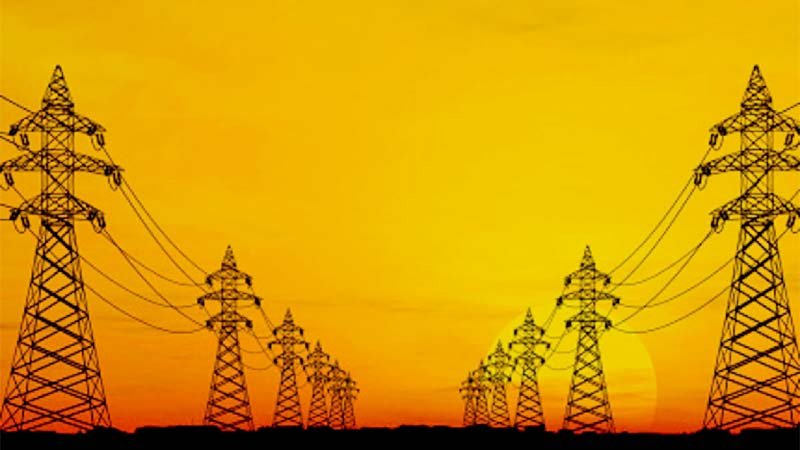100pc electricity coverage by Dec
2.54 cr new users in last 11 years

The country is set to declare achieving 100 percent (pc) electricity supply to its population by end of this year, already having reached 96 pc.
Besides, per capita electricity consumption has also increased close to a record 131 percent, a power division official said.
Such an incredible achievement has been possible by the policy focus of the government to substantially increase electricity users especially reaching 2.54 crore new users since the government took power (2009).
To increase such power users, both domestic and commercial, the government gave top priority on the sector spending millions of dollars to improve and modernise existing power generation capacities, transmission and distribution lines and establish new power plants.
In addition, to ensure achieving universal access to electricity by 2021, the government in the past decade or so accelerated Solar Home Systems (SHS) reaching some 45 lakh rural people who have no access to electricity from the national grid.
Power Secretary Dr Sultan Ahmed told Bangladesh Post “The electricity is a basic need right now. The government has taken this issue very seriously. As a result, power sector achieved a remarkable success in last decade.”
“Prime minister is also Minister of Power, Energy and Mineral resources ministry. That’s why, she is monitoring directly and our access is very easy, which is also so helpful for developing this sector. However, the government has taken various types of initiatives to increase power generation and users.”
He said, “The annual development budget has also increased in power division and ultimately, country’s electricity scenario has changed. The government has taken this issue very seriously as a business.”
Sultan further said, “Earlier our target was to ensure 100 percent electricity coverage by December, 2021. Currently 96 percent people is getting electricity facility. However, before the schedule time, we hope every house will come under electricity coverage by this December to celebrate ‘Mujib Barsho’.”
Palli Bidyut Shamity under Bangladesh Rural Electrification Board (BREB) is supplying electricity in rural areas. They have around 2.8 crore users out of the total 3.62 crore electricity users across the country.
According to BREB, more than 410 upazilas out of 461 upazilas are now under 100 percent electricity coverage. The remaining upazilas will be covered under electricity supply by December.
The state-owned West Zone Power Distribution Company Limited (WZPDCL) is working for distribution of electricity in the western zone (Khulna Division, Barisal Division and Greater Faridpur comprising 21 districts and 20 upazilas excluding the REB areas.
Engineer Mohammad Shafique Uddin, Managing Director of WZPDCL, told Bangladesh Post, “About 98 percent of the people are now getting electricity facilities in our distribution areas. I hope we can bring the entire distribution area under 100 per cent electricity coverage by next June.”
“We are working to provide power to remote areas like island Monpura of coastal Bhola district. We have a plan to set up a gas based mini power plant there,” he added.
The Northern Electricity Supply Company (NESCO) limited is being supplied electricity to West Zone (Rajshahi Division and Rangpur Division comprising of 16 districts and 47 upazilas excluding the REB area).
A H M Kamal, Executive Director (Technical & Operation) of NESCO told Bangladesh Post, “Our target is to ensure electricity for all in our distributions area by December. We have policy that where the grid line installation is difficult, the people will get electricity through the solar system.”
“The country has witnessed an unprecedented development in the power sector in the last one decade. And it has been possible due to the real-time sustainable planning and initiatives undertaken by the government,” the Power Division official said.
According to Power Division, in 2009, the average power demand at the time was about 6,000 MW while power generation capacity of the country was less than 5000 MW. Eight to ten hours load-shedding in summer days was causing unbearable miseries. Now, the installed capacity has increased to 22,787 MW (with captive and imported, renewable power).
The highest power generation has increased to 12,893 MW (29 May 2019) from 3,268 MW (January 6, 2009). The number of power plants was 27, now 137.
In 2009 access to electricity was 47 percent, now 96 percent. The electricity user was 1 crore 8 lakh, now it reached 3 crore 62 lakh. The transmission and distribution system losses have been significantly reduced to 4.98 percent during the incumbent government’s tenure, from 14.33 percent.
The total transmission line has now increased to 12,073 circuit kilometers from 8,000 circuit kilometers and the distribution line has reached 5,57,000 kilometers from 2,60,000 kilometers. To ensure uninterrupted power supply, the government has been implementing a plan to install 28,000 circuit km transmission lines and 6 lakh 60 thousand km distribution line through different projects by 2030.
The present government has implemented various projects to set up coal based power plants as an alternative for natural gas. Some mega projects are being implemented at Paira Moheshkhali and Matarbari classifying these areas as power hubs.
The construction of 1,200MW coal-fired power plant at Matarbari is expected to go into operation by 2023. On the other hand, work is going on to set up a 1320 MW power plant at Rampal in Bagerhat. Besides, Rooppur Nuclear Power plant with two units, with the total capacity of 2,400 MW is under construction at Rooppur of Pabna. The construction work is going on fast. It would produce and be added to the national grid by 2023-2024.



